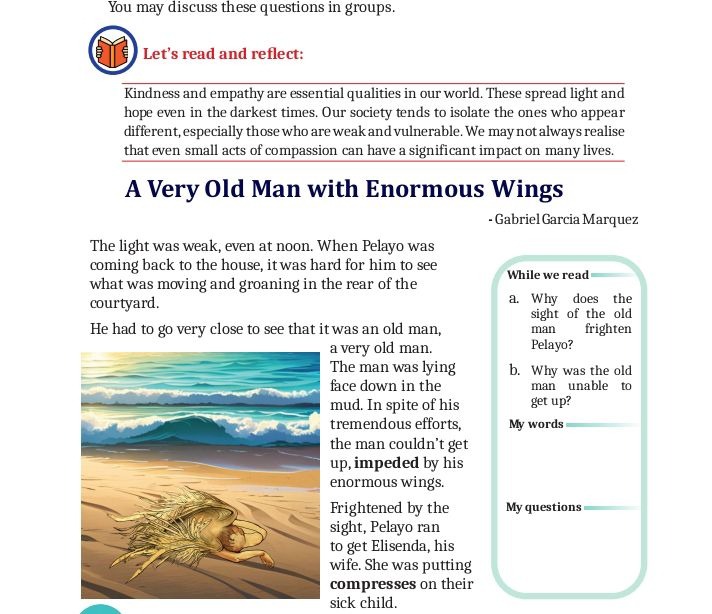A Roadside Stand – Detailed Study Notes
A Roadside Stand – Detailed Study Notes
Introduction
Robert Frost’s poem A Roadside Stand is a powerful critique of social and economic disparities. The poem highlights the struggles of poor rural people who set up a small stand by the roadside in the hope of selling their goods to wealthy city travelers. However, their expectations are met with disappointment as the urban passersby either ignore them or view their stand as an eyesore.
Through this poem, Frost presents a stark contrast between the privileged and the underprivileged, exposing the neglect and exploitation faced by the rural poor. The poem also critiques the false promises made by politicians and social reformers who claim to uplift these people but often fail to bring real change.
Summary of the Poem
The poem begins by describing a small roadside stand near the highway, where poor villagers try to sell their produce to passing travelers. They hope to earn some money to improve their lives, but the city people driving past in their polished cars hardly stop to buy anything. If they do stop, it is only to complain about how the stand ruins the beauty of the landscape.
The poet expresses sympathy for the poor farmers, showing their desperate hope for financial support. He criticizes the government and politicians who make empty promises to help the underprivileged but rarely take real action.
In the final lines, the poet reveals his deep frustration and sorrow for these people, acknowledging that their suffering seems endless. He questions whether a simple act of kindness—such as stopping to buy from the stand—could make a difference in their lives. The poem ends with a melancholic tone, highlighting the harsh realities of rural poverty.
Structure and Style of the Poem
A Roadside Stand is written in free verse, meaning it does not follow a strict rhyme scheme or meter.
The poem consists of a single stanza with long, flowing lines, which create a conversational and reflective tone.
Frost’s simple yet powerful language makes the poem accessible while carrying deep emotional weight.
Themes in the Poem
1. Rural Poverty and Economic Inequality
The poor villagers struggle to survive, relying on their roadside stand to earn a meager income.
The city dwellers, who have wealth and privilege, remain indifferent to their plight.
The poem highlights the unequal distribution of wealth in society.
2. The Indifference of the Wealthy
The rich pass by in their luxurious cars without stopping to support the struggling villagers.
Even when they notice the stand, they complain that it ruins the scenic beauty of the landscape rather than acknowledging the hardships of the people running it.
This reflects how the wealthy often ignore the struggles of the poor.
3. False Promises and Political Exploitation
The poet criticizes politicians and social reformers who claim they will help the poor but fail to bring real change.
The poor remain trapped in poverty despite promises of economic development.
This theme reflects Frost’s disillusionment with political systems that exploit the vulnerable.
4. The Desire for a Better Life
The villagers long for a better future and hope that their small business will provide them with financial security.
Their dream of a prosperous life remains unfulfilled, leading to disappointment and despair.
Poetic Devices Used in the Poem
1. Imagery
Frost uses strong visual descriptions to create vivid images in the reader’s mind.
“The little old house was out with a little new shed” – describes the modest and struggling nature of the roadside stand.
“Polished traffic passed with a mind ahead” – highlights the rich travelers’ indifference.
2. Alliteration
The repetition of consonant sounds enhances the musical quality of the poem.
“Polished traffic passed with a mind ahead” (repetition of ‘p’ sound).
“Sad, unable to do anything but suffer” (repetition of ‘s’ sound).
3. Irony
The irony in the poem lies in the contrast between expectation and reality.
The villagers expect city people to buy from them, but they are ignored.
The politicians promise to uplift the poor, but their condition remains unchanged.
4. Personification
The roadside stand is given human-like emotions, making it seem desperate and pleading.
“The roadside stand that too pathetically pled” – as if the stand is begging for attention.
Analysis of Important Lines
1. “The little old house was out with a little new shed”
This line introduces the roadside stand, emphasizing its small and humble nature.
The contrast between the “old house” and “new shed” shows the villagers’ struggle to improve their lives.
2. “Polished traffic passed with a mind ahead”
The phrase “polished traffic” refers to the wealthy people in luxurious cars.
The phrase “with a mind ahead” suggests that these people are too busy thinking about their own concerns to notice the struggles of the poor.
3. “It is in the news that all these pitiful kin are to be bought out and mercifully gathered in”
This refers to the false promises made by politicians, who claim they will help the poor by relocating them to better places.
However, such efforts rarely improve their situation. Instead, they are displaced and manipulated.
4. “Sometimes I feel myself I can hardly bear the thought of so much childish longing in vain”
Here, the poet expresses deep sorrow for the villagers, who continue to hope despite repeated disappointments.
The phrase “childish longing” highlights their innocence and vulnerability.
Message of the Poem
Through A Roadside Stand, Robert Frost delivers a powerful message about social injustice. He urges readers to reflect on the stark contrast between the lives of the rich and the poor. The poem critiques a society that neglects the underprivileged and fails to fulfill promises of progress and equality. Frost’s sympathetic tone reminds us of our moral responsibility to care for those in need.
Conclusion
A Roadside Stand is a deeply emotional and thought-provoking poem that exposes the harsh realities of rural poverty. Robert Frost masterfully portrays the disillusionment of the poor, their unfulfilled dreams, and the indifference of the wealthy. The poem serves as a social critique, urging people to acknowledge and address the economic divide in society.
---
Questions
1. What is the main theme of A Roadside Stand?
2. How does Robert Frost depict the struggles of the rural poor in the poem?
3. What poetic devices are used in the poem, and how do they enhance its meaning?
4. Explain the significance of the line: “Polished traffic passed with a mind ahead”.
5. How does the poem criticize political and social systems?




Comments
Post a Comment
Please share your feedback and questions